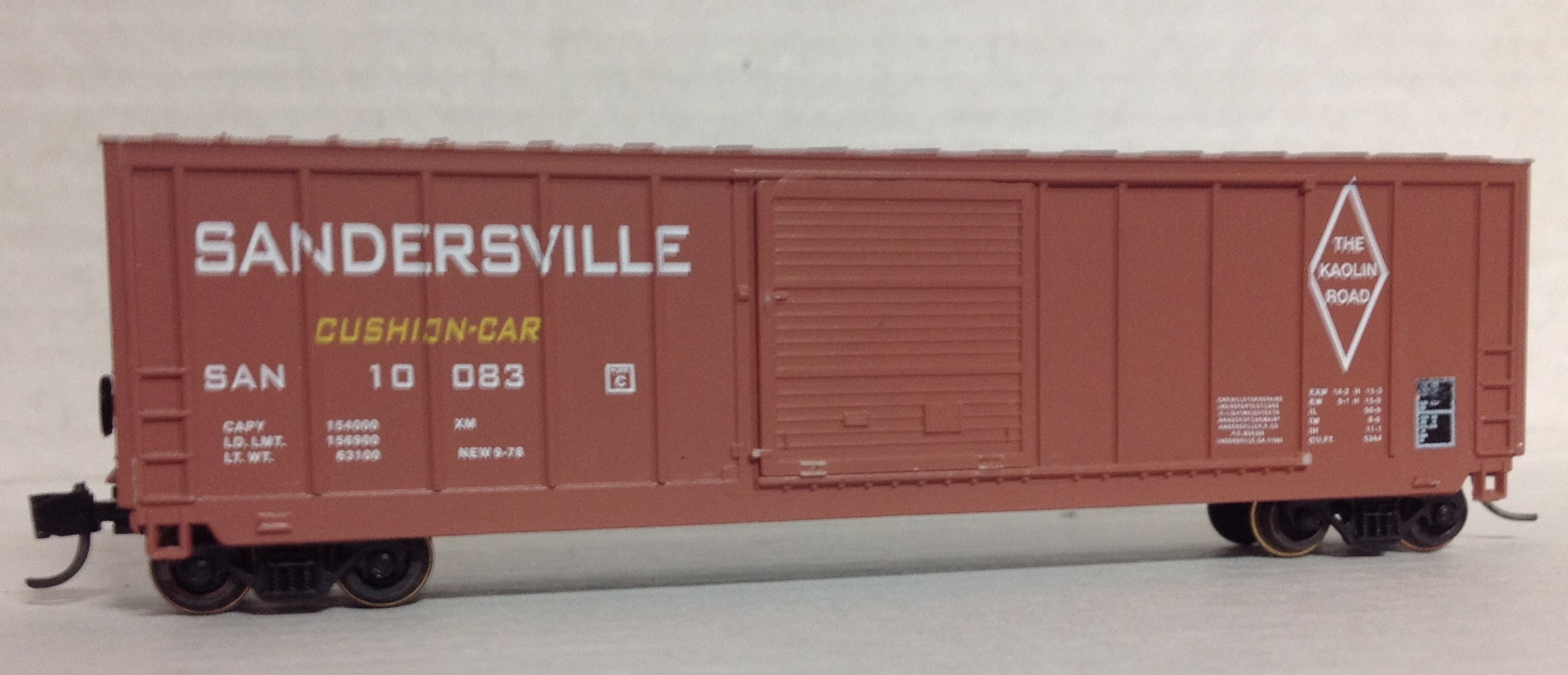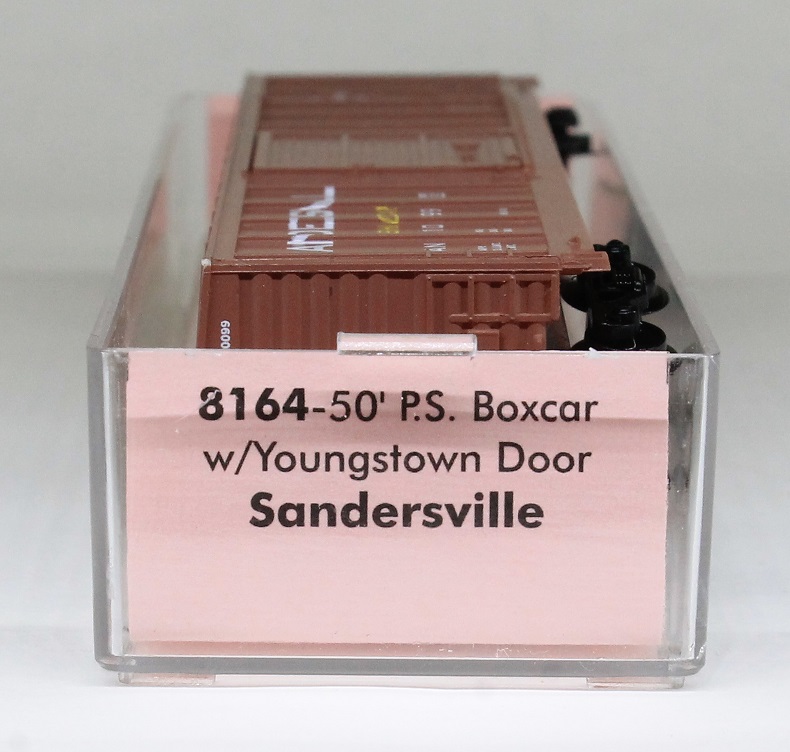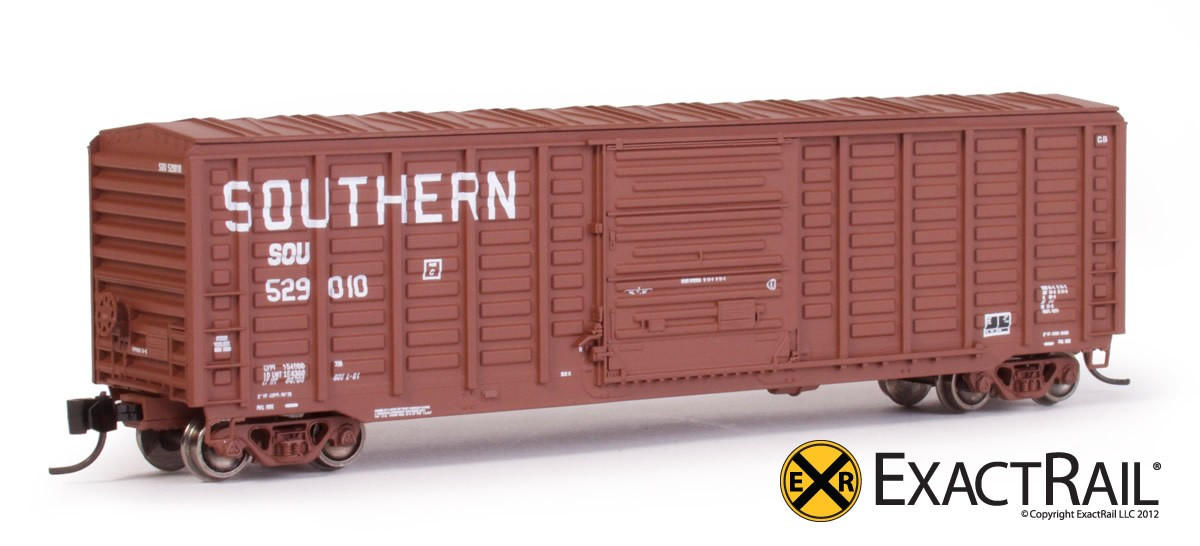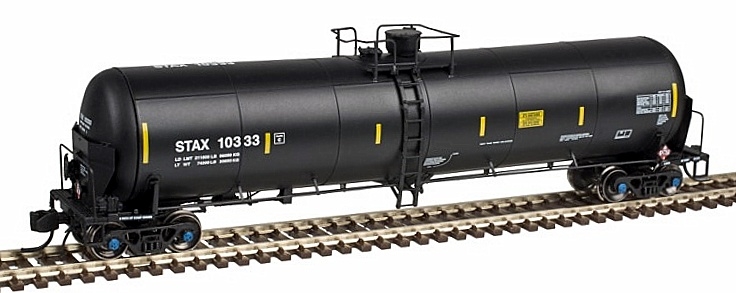Specific Item Information: This car was first documented in the MDC 1997 price list.
Model Information: This MDC Roundhouse body style models a 50 Foot Pullman Standard (PS) Boxcar with a single Youngstown sliding door, Rib Sides, peaked ends, and no roofwalk. The molds were acquired by Athearn/Horizon Hobbies.
Prototype History: The Pullman Standard or PS-1 design was one of the most popular and was widely used by North American railroads. These boxcars were built beginning in 1947 and share the same basic design, with certain elements such as door size, door style or roof type varying among the different railroads and production years. When production of these cars ceased in 1963, over 100,000 had been produced.
The original PS-1 measured 40 foot in length, but Pullman Standard also offered 50′ and later 60′ boxcars – also with the PS-1 designation.
The original PS-1 measured 40 foot in length, but Pullman Standard also offered 50′ and later 60′ boxcars – also with the PS-1 designation.
Road Name History: 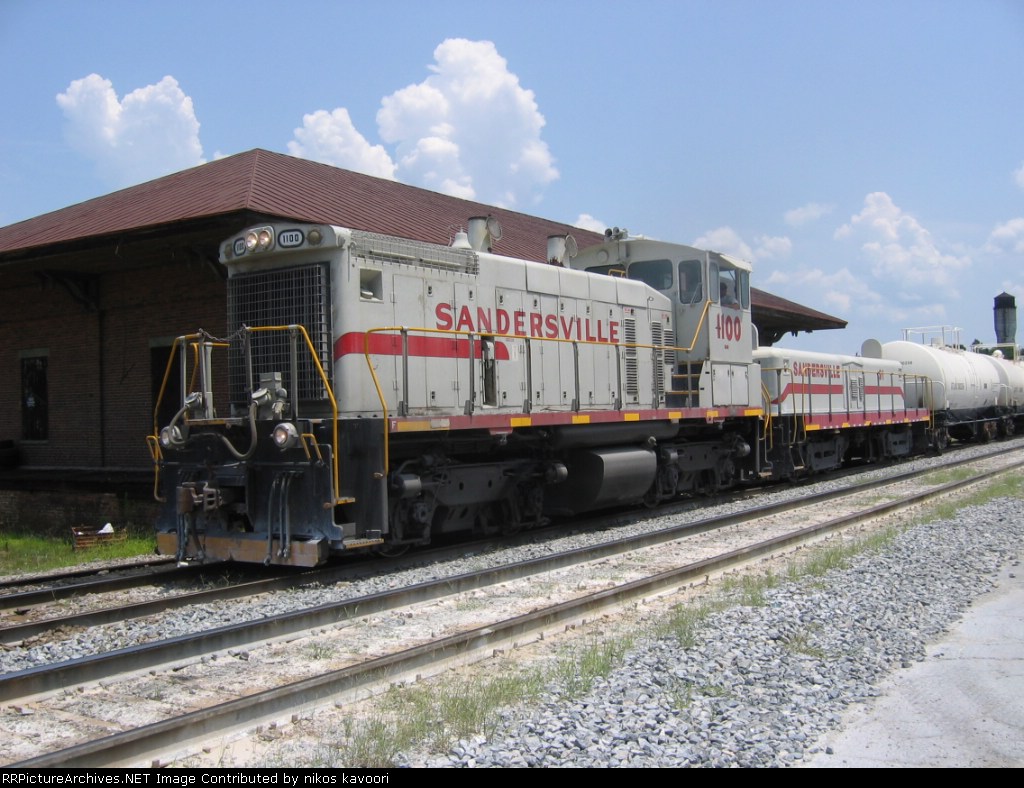 Sandersville began in 1893 as a four mile line running from Sandersville, Georgia to a connection with the Central of Georgia at Tennile. CoG was the principle backer of the line. In 1957, Sandersville was extended 5 miles north to service a large kaolin producing facility. Kaolin has since become the line’s principle commodity although they also haul lumber and plastics.
Sandersville began in 1893 as a four mile line running from Sandersville, Georgia to a connection with the Central of Georgia at Tennile. CoG was the principle backer of the line. In 1957, Sandersville was extended 5 miles north to service a large kaolin producing facility. Kaolin has since become the line’s principle commodity although they also haul lumber and plastics.
Kaolin is a form of clay mined in large quantities in Georgia. It is the principle ingredient in porcelain. Most is used to make paper smoother (magazine stock – lots of kaolin, paper towel – not so much.) The white frost of incandescent light bulbs is Kaolin. It also appears in cosmetics, toothpaste and is the active ingredient in Kaopectate! It is shipped in powder form in covered hoppers and as a slurry in tank cars.
For power, Sandersville uses 5 EMD switchers and a slug. All units are MU equipped as the four daily trains tend to be quite long and heavy for a 9 mile shortline. The engines are painted off-white (the color of kaolin.) The line has been owned for most of its history by the Tarbutton family.

Kaolin is a form of clay mined in large quantities in Georgia. It is the principle ingredient in porcelain. Most is used to make paper smoother (magazine stock – lots of kaolin, paper towel – not so much.) The white frost of incandescent light bulbs is Kaolin. It also appears in cosmetics, toothpaste and is the active ingredient in Kaopectate! It is shipped in powder form in covered hoppers and as a slurry in tank cars.
For power, Sandersville uses 5 EMD switchers and a slug. All units are MU equipped as the four daily trains tend to be quite long and heavy for a 9 mile shortline. The engines are painted off-white (the color of kaolin.) The line has been owned for most of its history by the Tarbutton family.
Brand/Importer Information:  MDC Roundhouse was founded in California in 1938 and relocated in 1993 to Carson City, Nevada due to statewide restrictions on painting. MDC Roundhouse was a producer of both RTR (Ready-to-Run) and kit versions of N Scale rolling stock as well as RTR locomotives. They entered the N scale market in 1979 with a Thrall Hi-Side Gondola and a Hi-Cube Single Door Box Car. MDC Roundhouse was purchased by Horizon Hobbies in June of 2004, when its owner since 1938 C. H. Menteer retired, and merged into their Athearn line.
MDC Roundhouse was founded in California in 1938 and relocated in 1993 to Carson City, Nevada due to statewide restrictions on painting. MDC Roundhouse was a producer of both RTR (Ready-to-Run) and kit versions of N Scale rolling stock as well as RTR locomotives. They entered the N scale market in 1979 with a Thrall Hi-Side Gondola and a Hi-Cube Single Door Box Car. MDC Roundhouse was purchased by Horizon Hobbies in June of 2004, when its owner since 1938 C. H. Menteer retired, and merged into their Athearn line.
Unlike many of their contemporaries which contracted with European firms to produce their products, MDC made their own toolings. They made several popular body styles and produced them for road names that many other vendors (even Micro-Trains) wouldn't touch. This made them popular with modelers. Also, their un-assembled "kits" permitted a lower price point so they were popular with "runners" as well as "modelers".
Of particular interest was the attention given to modern 50 foot steel boxcars. They made some attempt to accurately mold the differences into distinct models to represent each of the major prototype manufacturers products. They have distinct toolings not only for the different products from FMC, BFF and PS, but also multiple models for each of these manufacturers including "standard" vs "Youngstown" doors and "waffle" vs. "rib" sides. In total they produced 13 different versions of the 50 foot steel boxcar.

Unlike many of their contemporaries which contracted with European firms to produce their products, MDC made their own toolings. They made several popular body styles and produced them for road names that many other vendors (even Micro-Trains) wouldn't touch. This made them popular with modelers. Also, their un-assembled "kits" permitted a lower price point so they were popular with "runners" as well as "modelers".
Of particular interest was the attention given to modern 50 foot steel boxcars. They made some attempt to accurately mold the differences into distinct models to represent each of the major prototype manufacturers products. They have distinct toolings not only for the different products from FMC, BFF and PS, but also multiple models for each of these manufacturers including "standard" vs "Youngstown" doors and "waffle" vs. "rib" sides. In total they produced 13 different versions of the 50 foot steel boxcar.
Item created by: gdm on 2016-10-13 18:26:32. Last edited by baggedbird on 2023-05-30 17:47:51
If you see errors or missing data in this entry, please feel free to log in and edit it. Anyone with a Gmail account can log in instantly.
If you see errors or missing data in this entry, please feel free to log in and edit it. Anyone with a Gmail account can log in instantly.


